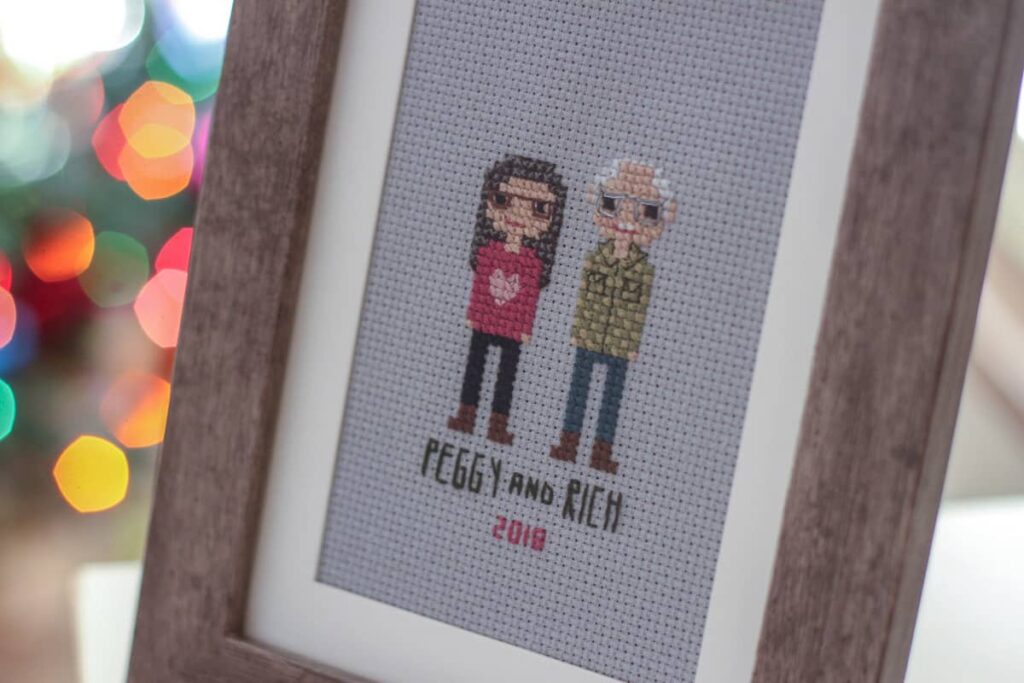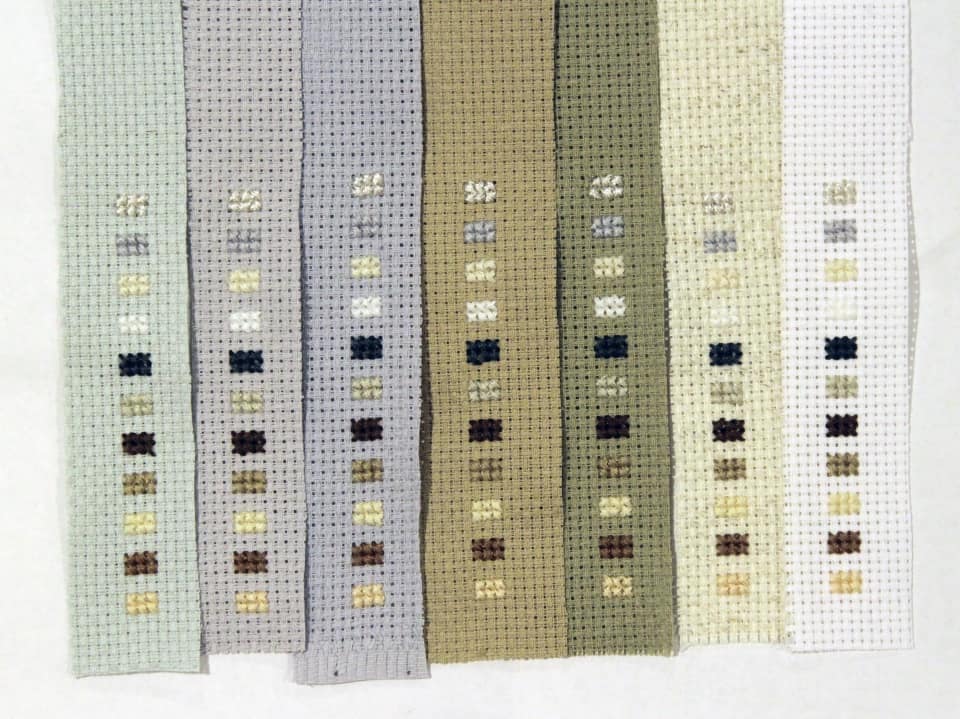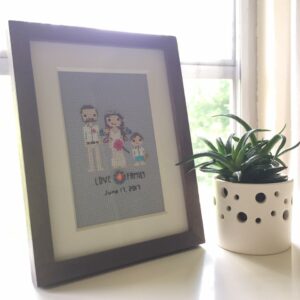



The principles of graphic design on a page or screen have a lot of overlap with design in the real world. Designing where to hang some frames on the blank wall is a lot like designing where the text and images go on a blank page. The same color theory that guides my color choices for a website redesign will also inform my color choices in painting my kitchen cabinets or picking out curtains.

I was working on a cross-stitch gift recently and began to choose the back color for the fabric. Often I use a white background fabric, but on this particular project, I had a lot of light tones to stitch – creams, tans, light browns, whites. Therefore, I was struggling to find a good background color from the Aida fabric at my local craft store.
The colors of background fabric at the store were all warm tones, just like my floss (thread) colors to stitch, and they were all similar in value (the degree of lightness or darkness) as well. You couldn’t really see my floss against the fabric, and this was the problem.
Contrast can come in lots of ways – a contrast of color hues themselves (similar hues vs. complementary hues), a contrast in value (light vs. dark), a contrast in temperature (cool vs. warm), or a contrast in intensity (high vs. low).
Rather than just finding the perfect background for that one stitch project, I decided to do a larger color theory experiment – craft style! I purchased online a selection of warm and cool neutral
The results really moved the color principles from theory to proof! Monitors don’t always display colors perfectly, but even here: notice how the same floss color looks so different on a different background.

(If you are a cross stitcher yourself, there is an image at the end of this post that labels all the colors of fabric and floss that I used.)
I noticed that some floss colors were nearly invisible, receding backward even, on one color fabric… but then practically jumped off of a different color fabric! Some fabrics made the colors seem warmer, or cooler, or duller, or brighter.

My experiment proved that the background color itself was just as important as choosing the best floss colors. For my stitch portraits, it was now clear that the best approach to take going forward was: to plan out what floss colors any portrait would need, and then use my sampler swatches to choose the color fabric that they would contrast the most with. Success!
It’s often unappreciated and maybe not even consciously recognized. But when you see a cross stitch, a painting, a beaded bracelet or a weaving piece, it’s often the artist’s use of colors and contrast that adds to the appeal of the piece. In my case, I needed my figures to pop off the background, so high-contrast was the goal. On the other hand, low contrast can be desirable, lending a calming feel or evoking certain feelings in the viewer.
You can elevate your own crafts by making sure that your color choices support your contrast needs for the finished piece. Happy making!

(My sources for purchasing the colors of Aida fabric not carried at my local store were: EverythingCrossStitch.com and 123Stitch.com.)
Are you a maker looking to share or sell what you make? We can help you!
Blustery Day Design specializes in building websites and designing all the things that crafters and makers need to share their passion with the world. We’d love to hear from you.
WoW !! Thank you for this !!
This is fabulous I just downloaded and saved to my pc. Thank you so very much